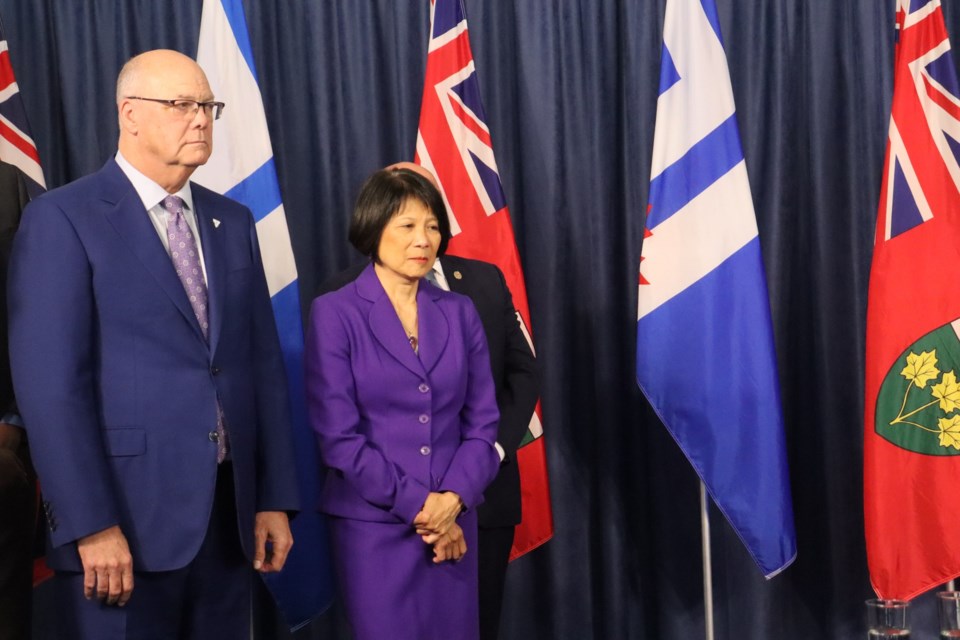Sixplexes could soon be allowed on any residential lot in Toronto if city councillors approve a new staff proposal.
A sixplex is a residential building that contains six separate housing units within a single structure. However, the proposal would limit sixplexes to detached homes. The plan would also allow each side of a semi-detached home to be turned into a separate fourplex.
That’s a big shift from the city's previous rules — until now, two connected fourplexes were treated as apartment buildings, which aren’t typically allowed on quiet residential streets.
To make these new homes more livable, staff are also proposing a small half-metre height increase to give basement units more headroom.
But the city still wants some limits: fourplexes would be capped at a total of eight bedrooms, and larger multiplexes could have up to 12 bedrooms altogether. Staff included the cap over fears that multiplexes could turn into rooming houses.
This proposal builds on recent moves to increase density in low-rise neighbourhoods.
Toronto approved citywide fourplexes in 2023 and started testing sixplexes in Ward 23 (Scarborough North) earlier this year. It’s a big step forward from the days when building anything but a single-family home in most neighbourhoods was next to impossible.
Sean Galbraith, an urban planner who specializes in building multiplexes, said the proposal represents “bold incrementalism.”
“It’s a pretty fundamental shift, saying that you can have that many units on a residential lot,” he said.
However, Galbraith took aim at the bedroom cap and small height increase — pointing out that single-family homes do not have a cap on bedrooms.
“I can have a 16-bedroom oneplex, so why are we regulating this for multiplexes?” he said. “It feels like an old school fear of rooming houses.”
The half-metre height increase will force sixplex units to be smaller, he said.
“You can’t make the building bigger than you can for a duplex, so we’re now saying if you want to do six, they have to be small,” he said.
Mayor Olivia Chow and Coun. Gord Perks (Parkdale-High Park), chair of the city’s planning and housing committee, threw their weight behind the staff proposal.
“In the midst of an urgent housing crisis, these changes will help accelerate the construction of new homes and support complete communities across Toronto,” Chow said in a press release.
The mayor also framed the vote as important to Toronto’s finances. In 2023, Chow struck a half-billion-dollar deal over four years with the federal government to permit more density across the city. If council doesn’t live up to its end of the deal and approve staff recommendations, it could jeopardize over $100 million in federal money.
Housing debates are always contentious at city hall, however, and the recommendations aren’t guaranteed to pass even with Chow’s backing.
“We'll hear from the councillors, we'll hear from the local residents, and we'll make the decisions,” Chow said.
The city has high hopes for multiplexes. In a separate report, staff estimate nearly 90,000 new housing units can be added over the next 25 years by allowing them on any lot.
However, uptake hasn’t been anywhere near that significant in the past few years.
From May 2023 to November 2024, 750 builders applied for permits and 452 were issued. Just 108 of the permits were closed, meaning construction finished and inspections were completed.
In total, 1,228 residential units were added, but just 726 were new, as three-quarters of all multiplexes were converted from existing homes, while one-quarter were new builds.
Multiplexes are also highly concentrated in the old city of Toronto — with some exceptions. Half of all permits were issued in Ward 9 (Davenport), Ward 4 (Parkdale-High Park) and Ward 11 (University-Rosedale), Ward 5 (York South-Weston) and Ward 14 (Toronto-Danforth).
Areas with the lowest number of multiplexes include Ward 13 (Toronto Centre), Ward 16 (Don Valley West), Ward 22 (Scarborough-Agincourt), Ward 25 (Scarborough Rouge Park), and Ward 7 (Humber River-Black Creek). Together, they account for less than three per cent of total permits.
The staff report also addressed some longstanding concerns residents and councillors have about multiplexes, particularly about parking spaces, unit size and affordability.
Under current rules, multiplex builders aren’t required to provide parking, sparking worry from existing residents that their streets wouldn’t be able to accommodate more cars.
However, two-thirds of new multiplexes included between one and four parking spots and the data didn’t show a “substantial increase” in on and off-street parking permits.
Staff analyzed the per-square-foot costs of multiplex rentals and compared them to condo units, with multiplexes coming in on the cheaper end.
According to the staff report, multiplex units rent for an average of $2.93 per square foot, versus $4.44 for condos.
“Multiplex housing appears to be less expensive than the city of Toronto condo market,” according to the report.
Multiplexes also provide bigger units and more bedrooms, staff wrote. The average multiplex unit is 1140 square feet and 65 per cent had two or more bedrooms per unit.
The report heads to the planning and housing committee on June 12. If passed, it will go to full council for a vote in late June.




